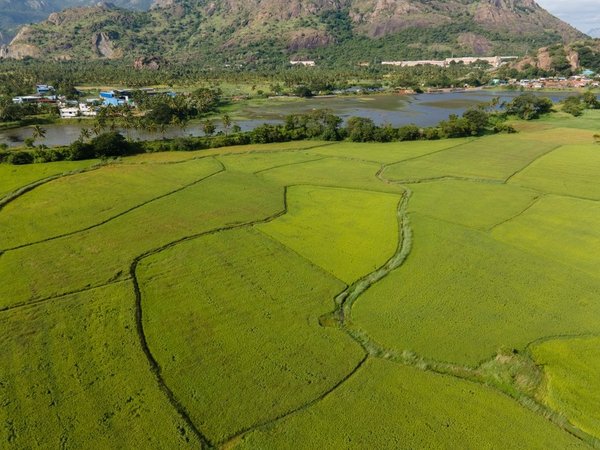 Read this article in French
Read this article in French- Share this article
- Subscribe to our newsletter
A modelling framework to assess surface and groundwater resources
Groundwater – the water contained in porous and fractured rocks underground – is the largest freshwater source on Earth apart from the ice caps and glaciers. It feeds into rivers, lakes and other surface water bodies, and is essential for ecosystems. In addition, groundwater systems are an integral part of agricultural irrigation, especially in regions with scarce surface water resources.
Existing large-scale models tend to oversimplify groundwater flow, often do not adequately integrate human water management and operate at coarser resolutions than needed for modelling small-scale hydrologic processes.
In a new study in Geoscientific Model Development, a team of researchers at the International Institute for Applied Systems Analysis (IIASA) coupled the Community Water Model (CWatM) with the groundwater flow model MODFLOW, allowing for the reproduction of water tables at very fine spatial resolutions. The integrated model simulates hydrological processes occurring in soil and surface water bodies at the hillslope scale, with grid cells smaller than one kilometre. It can be used to model water cycles at various geographical levels, ranging from small basins to entire countries.
By comparing the Austrian Seewinkel region and the Indian Bhima basin, extending over 573 and 46,000 km² respectively, the researchers tested the model’s capacity to adequately reproduce water tables under different climatic, geological, and socioeconomic conditions. The simulated results were validated with observed water table depths and fluctuations over a period of 35 years in Seewinkel and 16 years in Bhima.
“These biophysical models are important because water cycles need to be quantified for proper water management,” says Luca Guillaumot, the study’s lead author and a researcher in the IIASA Water Security Research Group. “We can study how local and regional water processes interact by linking models at different scales. In particular, a model like CWatM-MODFLOW is a useful tool to project the impact of future water management plans, land cover changes, or climate change.”.
Irrigation reduces groundwater support to rivers and humid areas
Furthermore, the authors used the model to assess the impact of groundwater-based irrigation on the water cycle in the two regions under investigation. They found that irrigation increases the amount of water that moves into the atmosphere through evaporation from soil and transpiration through plant tissues, but reduces groundwater support to rivers and humid areas, especially during dry seasons. The results also indicate that the water table is deeper in areas with intense irrigation pumping.
Despite persistent challenges in reproducing water table depth patterns and calibrating the model at resolutions as fine as possible (~100m), the study represents a significant improvement in large-scale hydrological modelling.
“Humans are transforming the Earth’s water systems. IIASA water models can answer important questions about how we affect regional and global water systems at different spatial and temporal scales. Regional stakeholders, including policy-makers, can use this information to construct realistic water management scenarios,” concludes study co-author and IIASA Biodiversity and Natural Resources Program Director Yoshihide Wada.
Reference:
Guillaumot, L., Smilovic, M., Burek, P., de Bruijn, J., Greve, P., Kahil, T., and Wada, Y. (2022). Coupling a large-scale hydrological model (CWatM v1.1) with a high-resolution groundwater flow model (MODFLOW 6) to assess the impact of irrigation at regional scale. Geoscientific Model Development 15, 7099–7120 DOI: 10.5194/gmd-15-7099-2022
More information:
The Community Water Model (CWatM)





Add a comment
Be the First to Comment